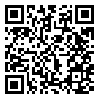BibTeX | RIS | EndNote | Medlars | ProCite | Reference Manager | RefWorks
Send citation to:
URL: http://jsmt.khu.ac.ir/article-1-106-en.html
Objective: KinesioTaping is a method for rehabilitation of patients and athletes.
The efficacy of taping to enhance proprioception precision and balance has
been studied. The effects on skin sensory receptors and limb consciousness
are mechanisms of taping but there is an important question that if the persons
pay attention to other task the effectiveness of taping is still exists or not?
Materials and Methods: Ten healthy persons with average age of 28±3/3
years¸ height of 161±4/1cm and weight of 52±14/1kg participated in this study.
The index of stability was assessed in five conditions standing on the BIODEX
ISOKIETIC Instrument. The examination five conditions were as following
order.1-standing barefoot for 20 second (dominant foot).2-standing and dual
tasking for 20 second.(Reverse numbering from digits between 100-150). 3-
standing with taping on proneal muscles for 20 second.4-standing with taping
and dual tasking for 20 second.5-first condition was repeated. Results:
However¸ there was not any significant difference between the Stability Index
(SI) of the test conditions in this study but the pattern of changes showed that
when volunteers performed dual task with or without tape the stability index
improved. Improvement of SI with taping was not considerable. Conclusion:
Taping has a little positive effect on stability but effects of dual tasking were
coincided with the non-linear U-shaped pattern of dual tasking effect. It means
that stability was improved by the dual tasking used in this study which may be
too light to decrease stability of the subjects. This finding showed that triple
reverse numbering is not enough difficulties to attention demand interferes the
stability of the subjects.
Received: 2016/08/31 | Accepted: 2016/08/31 | Published: 2016/08/31
| Rights and permissions | |
 |
This work is licensed under a Creative Commons Attribution-NonCommercial 4.0 International License. |




